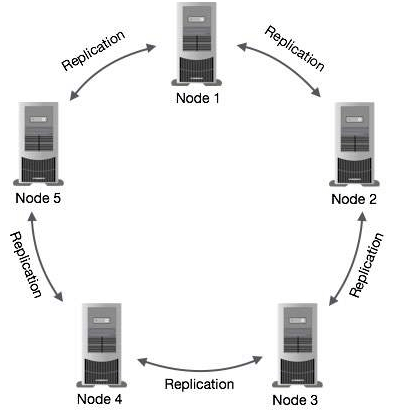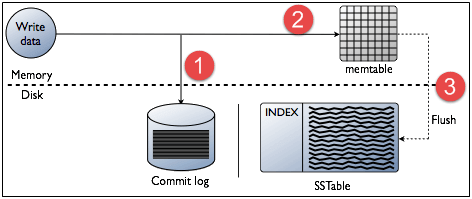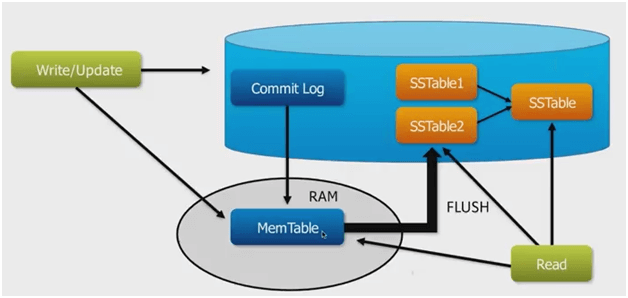Cassandra ArchitectureCassandra was designed to handle big data workloads across multiple nodes without a single point of failure. It has a peer-to-peer distributed system across its nodes, and data is distributed among all the nodes in a cluster.
Data Replication in CassandraIn Cassandra, nodes in a cluster act as replicas for a given piece of data. If some of the nodes are responded with an out-of-date value, Cassandra will return the most recent value to the client. After returning the most recent value, Cassandra performs a read repair in the background to update the stale values. See the following image to understand the schematic view of how Cassandra uses data replication among the nodes in a cluster to ensure no single point of failure.  Components of CassandraThe main components of Cassandra are:
Cassandra Query LanguageCassandra Query Language (CQL) is used to access Cassandra through its nodes. CQL treats the database (Keyspace) as a container of tables. Programmers use cqlsh: a prompt to work with CQL or separate application language drivers. The client can approach any of the nodes for their read-write operations. That node (coordinator) plays a proxy between the client and the nodes holding the data. Write OperationsEvery write activity of nodes is captured by the commit logs written in the nodes. Later the data will be captured and stored in the mem-table. Whenever the mem-table is full, data will be written into the SStable data file. All writes are automatically partitioned and replicated throughout the cluster. Cassandra periodically consolidates the SSTables, discarding unnecessary data.  Read OperationsIn Read operations, Cassandra gets values from the mem-table and checks the bloom filter to find the appropriate SSTable which contains the required data. There are three types of read request that is sent to replicas by coordinators.
The coordinator sends direct request to one of the replicas. After that, the coordinator sends the digest request to the number of replicas specified by the consistency level and checks if the returned data is an updated data. After that, the coordinator sends digest request to all the remaining replicas. If any node gives out of date value, a background read repair request will update that data. This process is called read repair mechanism. 
Next TopicRelational vs nosql database
|
 For Videos Join Our Youtube Channel: Join Now
For Videos Join Our Youtube Channel: Join Now
Feedback
- Send your Feedback to [email protected]
Help Others, Please Share










